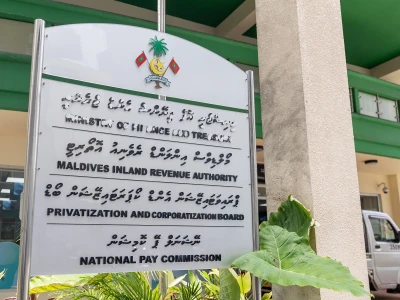
Govt submits MVR 5 billion supplementary budget to parliament
The budget aims to cover the state's operating expenses, including Public Sector Investment Programme (PSIP) projects.
Top Stories
Government on Thursday presented an additional MVR 5 billion supplementary budget to parliament.
The budget, introduced by finance minister Moosa Zameer, aims to cover the state's operating expenses, including Public Sector Investment Programme (PSIP) projects.
Zameer explained that the previously approved budget for this year was prepared by the previous government, without fully incorporating the vision and priorities of the current administration led by President Mohamed Muizzu.
The supplementary budget includes allocations such as:
-
MVR 2 billion for PSIP projects
-
MVR 441.1 million for State-Owned Enterprises (SOEs)
-
An additional MVR 650 million in the contingency budget
-
MVR 458 million for student loans
-
MVR 200 million for medical consumables
-
MVR 262.6 million for medical treatment
-
MVR 1.02 billion for subsidies
-
MVR 24.4 million for salaries
Zameer noted that MVR 2 billion was specifically allocated for PSIP projects to settle last year's bills, support the expedited implementation of major projects, and provide financial flexibility for projects completed below expected costs.
He further highlighted key fiscal indicators, mentioning that when this year's budget was passed, the state anticipated an expenditure of MVR 60 billion, of which 74 percent had been spent as of the last month.
To finance the supplementary budget, the government plans to secure MVR 1 billion from foreign sources and MVR 3 billion from domestic lenders, alongside the sale of treasury bills.
With the inclusion of this supplementary budget, the total expenditure for the year is expected to reach MVR 55 billion. Revenue and grants, including supplementary budget revenues, are projected at MVR 34 billion, with an overall deficit of MVR 4 billion. This will increase the total deficit for the year to MVR 18 billion, representing 16 percent of GDP.
By the end of the year, the government debt is estimated to reach 118 percent of GDP. Zameer stressed that additional borrowing, even on concessional terms, is challenging due to the persistent fiscal deficit and long-term financial requirements.
To address these challenges, he emphasised the need for systemic changes aimed at increasing revenue and reducing expenditure. These measures are being factored into the government’s plans for the 2025 budget and mid-term strategy. He cautioned that the reforms are crucial as their improper implementation could have a direct impact on the public.
Related
Related

Parliament approves MVR 5 billion supplementary budget for 2024

Committee summons minister, governor over supplementary budget

Govt allocates majority of extra budget to projects, subsidies

